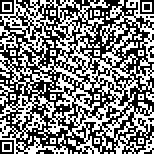| 摘要: |
| [摘要] 目的 分析微创经皮肾镜碎石术(mPCNL)与输尿管软镜碎石术(FURL)治疗直径2~3 cm肾结石的疗效及安全性。方法 对该院2015-05~2018-02收治的67例直径2~3 cm肾结石患者的临床资料进行回顾性分析,其中mPCNL组44例,FURL组23例。比较两组手术时间、术中出血量、术后住院时间、结石清除率、住院总费用、二次手术及术后并发症发生情况。结果 mPCNL组手术时间及住院总费用较FURL组少,差异有统计学意义(P<0.05);但mPCNL组在术中出血量及术后住院时间方面较FURL组多,差异有统计学意义(P<0.05)。mPCNL组总体清石率达95.45%;41例患者出现肉眼血尿,1例患者术后第3天开始出现严重的肉眼血尿,伴血红蛋白持续性下降,选择性肾动脉造影提示假性动脉瘤,予栓塞处理;5例患者出现发热,未发生全身炎症反应综合征(SIRS)并发症;6例患者在复查CT时发现肾包膜下血肿,3个月后复查血肿吸收。结石残留2例,均位于肾下盏,因其他因素未作进一步处理。FURL组总体清石率达91.30%;15例患者术后均有不同程度的肉眼血尿,1~3 d后肉眼血尿自行消失;8例患者出现术后SIRS,改用“泰能”抗感染治疗;5例患者出现输尿管损伤,均由术中反复进鞘所致;3例患者出现“石街”形成,予体外冲击波碎石(ESWL)处理;1例患者术前存在感染,且合并糖尿病,术后出现肾包膜下血肿,保守治疗,12周后复查CT,血肿吸收。结论 mPCNL及FURL处理直径2~3 cm单发肾结石各有特点,均安全、有效,适合临床推广应用。 |
| 关键词: 肾结石 输尿管软镜碎石术 微创经皮肾镜碎石术 |
| DOI:10.3969/j.issn.1674-3806.2019.05.20 |
| 分类号:R 692.4 |
| 基金项目: |
|
| Efficacy and safety of mPCNL and FURL in treating kidney stones of 2~3 cm in diameter |
|
LI Gan-hong, LI Qian-wei, YANG Jun, et al.
|
|
Department of Urology, the Fifth(Zhuhai) Hospital Affiliated to Zunyi Medical College, Guangdong 519100, China
|
| Abstract: |
| [Abstract] Objective To investigate the efficacy and safety of minimally invasive percutaneous nephrolithotomy(mPCNL) and flexible ureteroscopy lithotripsy(FURL) in treating kidney stones of 2~3 cm in diameter. Methods A retrospective analysis was performed on 67 patients with kidney stones of 2~3 cm in diameter treated in our hospital from May 2015 to February 2018, including 44 cases in the mPCNL group, and 23 cases in the FURL group. The operation time, amount of intraoperative bleeding, length of postoperative stay in hospital, scavenging rate of stones, total hospitalization expense, occurrence of secondary operation and postoperative complications were compared between the two groups. Results Compared with the FURL group, the mPCNL group had less operation time and total hospitalization cost, the differences were statistically significant(P<0.05). However, the intraoperative blood loss and postoperative hospital stay in the mPCNL group were more than those in the FURL group, the differences were statistically significant(P<0.05). In the mPCNL group, the total scavenging rate of stones was 95.45%; 41 patients had gross hematuria; 1 patient had severe gross hematuria on day 3 after surgery, with sustained reduction of hemoglobin, selective renal arteriography indicated that this patient had pseudoaneurysm and embolization was performed. 5 patients had fever without systemic inflammatory response syndrome(SIRS) complications; renal subscapular hematomas were found in 6 patients by CT re-examination, in whom the hematomas were absorbed in the re-examination 3 months later; 2 patients had retained stones locating at the lower calyx which were not treated due to other causes. In the FURL group, the total scavenging rate of stones was 91.30%; 15 patients had gross hematuria to varying degrees, which disappeared without treatment 1 to 3 days after occurrence; postoperative SIRS occurred in 8 patients who were treatment with TIENAM(imipenem) for anti-infection; ureteral injury occurred in 5 patients, which was caused by sheath withdrawal during the operation and repeated inserting of the sheath; the formation of “stone street” was found in 3 patients who were given extracorporeal shock wave lithotripsy(ESWL) treatment; 1 patient with preoperative infection accompanied by diabetes had renal subscapular hematoma and was provided with conservative treatment, and the hematoma was found to absorb by CT re-examination 12 weeks later. Conclusion Both mPCNL and FURL are safe and effective in treating single kidney stone of 2~3 cm in diameter, which are suitable for clinical application. |
| Key words: Kidney Stones Flexible ureteroscopy lithotripsy(FURL) Minimally invasive percutaneous nephrolithotomy(mPCNL) |

